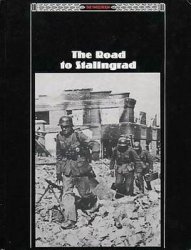The question of the quantities of grain the army required for its soldiers and livestock is complicated by several factors, in addition to a relative sparseness of detailed statistical evidence, especially from the middle Byzantine period. In particular, the values of the weights and measures used in Byzantine texts, as well as the more detailed and informative material from the late Roman period and before, are still by no means generally agreed. In addition, the technology of milling and baking, and the types of grains involved, present several problems. I have assumed in respect of the figures which are given in the sources that they refer to unmilled grains, except in one or two cases where flour is actually stated to have been supplied. In general, flour would be too easily damaged by weather and transportation, and the assumption in some texts that handmills were taken would tend to confirm this. In the following section, I have attempted briefly to survey the evidence for this aspect of military undertakings in order to provide a basis for calculations about the relationship between the needs and rate of consumption of the army, on the one hand, and the distances covered and duration of marches on the other.
As noted in Chapter 5, soldiers were issued with, or themselves milled and baked, two main varieties of bread: simple baked loaves, and double-baked “hard tack”, referred to in late Roman times as bucellatum and by the Byzantines as paximadion or paximation. The hard tack kept better and much longer, was easily produced in field conditions, and required a relatively unsophisticated milling and baking technique.1 Hard tack could be baked either in field ovens—klibanoi—or simply laid in the ashes of camp-fires: the latter technique was no doubt employed when speed of movement was a priority, as the tenth-century Sylloge tacticorum specifies.2
One document states clearly that 80 Roman pounds of “dry” bread (i. e. 25.6 kg/56.3 lb) could be baked from 1 artaba of wheat.3 One artaba of wheat is the
Equivalent of 3.3 modioi xystoi at 26.6 Roman pounds, that is to say 87.78 Roman pounds (28.7 kg/63.2 lb).4 Now, in pre-modern milling, which was less efficient than industrial techniques, a greater proportion of bran and wheat germ would be included in the flour, and in field or campaign conditions, the grinding process would tend to be both more rapid and produce a far less refined flour. After grinding, an average return in flour of between 75 and 90 per cent on weight of grain would result, somewhat higher than the 72 per cent produced by modern milling and extractive processes. In the case in hand, and assuming the least favourable conditions for grinding, 1 annonikos modios of grain (26.6 Roman pounds) would produce between 20 and 24 Roman pounds of flour.5 In modern baking, a return of at least 2:1 on weight of flour : bread is usual, since rolling and milling techniques produce a greater amount of damage to the starch elements, which in turn increases water absorbency and water retention capacity, and thus overall weight. In ancient and medieval breadmaking, although fine white bread (using only some 75 per cent of the product of grinding and milling) was certainly produced for the luxury market,6 the degree of water absorption was much less, especially in the case of bucellatum and biscuit (hence the description of some Egyptian bread in papyrus documents as “dry” bread). Thus the return on flour per weight of dough produced was lower, varying from 1:1 to 1:1.75, depending on the type of grain milled, the degrees of refinement of the milling process and other variables.7
The ratio of 1 artaba to 80 Roman pounds of bread bears these figures out: as we have seen, 87.78 Roman pounds of wheat, after milling (i. e. the loss of an average of c. 20 per cent of weight, leaving c. 75 pounds of flour) and baking, produced only 80 pounds of bread. Specific figures are given in a set of records relating to a sea-borne expedition in the year 911, and these are illustrative of the quantities involved in organizing a major expeditionary force.
A total of 40,000 modioi of barley (20,000 each from Thrakasion and Anatolikon/Kibyrrhaiotai) and 40,000 modioi of wheat, as well as 60,000 modioi of flour was to be supplied, in addition to further unspecified quantities of paxamation, wheat and flour. It is not stated whether the flour is wheat flour or barley flour (or even millet),8 but it is possible that the unspecified quantity of wheat required from the Anatolikon region was the same as that provided by the Thrakasion (as was the case with the barley). Leaving aside the unspecified quantities for the moment, the 40,000 modioi of wheat and 60,000 modioi of flour would total, after the milling of the wheat (i. e. deducting an average 15 per cent from the weight of the wheat as loss through grinding), some 34,000 +60,000=94,000 modioi of flour. Assuming the annonikos modios is meant (which is probable, but by no means certain), this gives us some 2.54 million Roman pounds of flour (817,000 kg/1,762,500 lb), which would bake into c. 2.6 million Roman pounds of bread (approx. 818,000 kg/1,770,000 lb). The total personnel involved in the expedition amounted to some 46,964, including all the oarsmen and sailors; assuming the minimum requirement of 1.3 kg of bread per day per man (just under 3 lb), this is enough only for 12 days maximum. The probability is, therefore, that these provisions were to be baked into hard tack and were supplied to only a portion of the army, and that other supplies were to be collected both en route and in enemy territory. The method for calculating the ratio of supplies to men and to duration of expedition is given below, in Appendix 3.




 World History
World History









